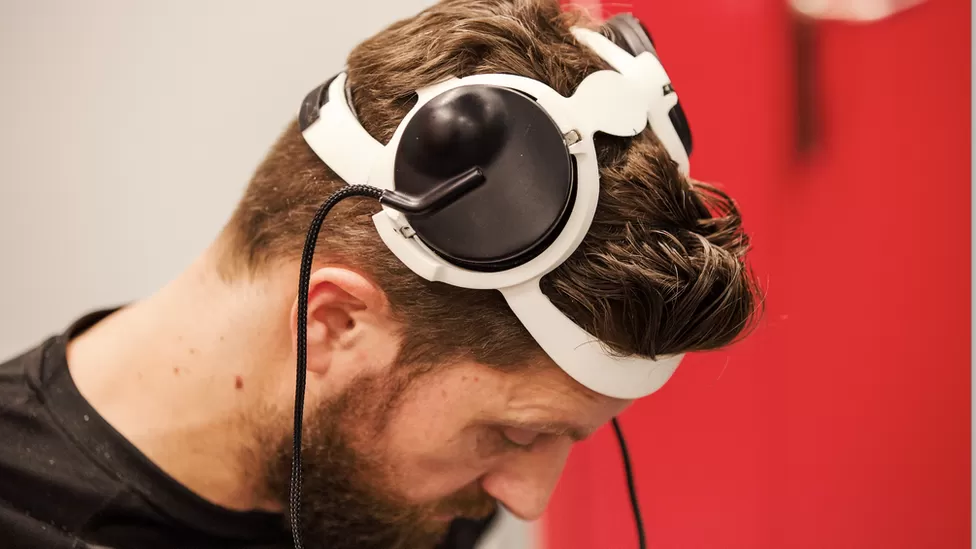Introduction
In a groundbreaking medical first, a paralyzed man has regained the ability to walk simply by using his thoughts, thanks to electronic brain implants. Gert-Jan Oskam, a 40-year-old Dutch man who was paralyzed in a cycling accident 12 years ago, underwent a pioneering procedure that involved the insertion of electronic implants in his brain and spine. The implants wirelessly transmit his neural signals to his legs and feet, enabling him to stand, walk, and even climb stairs. This remarkable achievement has provided hope and inspiration to the spinal cord injury community, signaling a potential paradigm shift in the field of neurotechnology.
The Journey to Recovery
The development, led by Swiss researchers and recently published in the journal Nature, represents a significant milestone in the quest to restore motor function in paralyzed individuals. Prof Jocelyne Bloch, the neurosurgeon who performed the delicate surgery, emphasized that the system is still in the early stages of research and requires further refinement before it can be made widely available. However, the ultimate goal is to advance the technology from the lab to the clinic as quickly as possible, offering hope to countless individuals who have been told they may never regain mobility.
A Life-Changing Transformation
For Gert-Jan Oskam, the impact of the brain implants has been life-changing. Describing his experience, he likens it to that of a toddler learning to walk for the first time. The ability to stand up, walk, and share a beer with a friend is a pleasure that many take for granted. While the technology still has a long way to go before it becomes accessible to all, its potential to restore independence and functionality is incredibly encouraging.
The Groundbreaking Procedure
During the surgery in July 2021, Prof Bloch implanted two disc-shaped devices into Gert-Jan’s brain, enabling wireless transmission of neural signals associated with movement. These signals were then captured by sensors attached to a helmet worn by Gert-Jan. A carefully placed second implant on his spinal cord received these signals and translated them into instructions to move his leg and foot muscles. With several weeks of training and rehabilitation, Gert-Jan began to walk with the aid of a walker, exhibiting slow but smooth movements.
Future Implications
The success of the brain implants builds upon previous research that solely focused on spinal implants to restore movement. The combination of brain and spinal implants represents a significant step forward in the field of neurotechnology. While the current systems are still bulky and experimental, researchers envision a future where the technology is miniaturized and integrated into patients’ everyday lives.
The Road Ahead
The road to making this technology widely available involves further refinement and improvement. Researchers aim to enhance the system’s portability and functionality, ensuring that it can be used consistently and seamlessly. Commercialization efforts are already underway, with the hope of bringing this transformative technology to individuals shortly after their injuries occur, maximizing the potential for recovery.
Conclusion
The story of Gert-Jan Oskam’s remarkable journey from paralysis to walking with the aid of brain implants showcases the immense potential of neurotechnology in restoring mobility and independence for paralyzed individuals. While there is still much work to be done, the success of this groundbreaking procedure represents a significant step forward in the field. With ongoing advancements and continued research, brain implants have the potential to revolutionize the lives of those affected by spinal cord injuries, offering them renewed hope and the opportunity to regain their freedom of movement.
Follow us on Twitter and Facebook for more content.
JOIN OUR WHATSAPP GROUP
CLICK HERE FOR ENTERTAINMENT NEWS
CLICK HERE FOR UNIVERSITY OF GHANA NEWS
READ ALSO:
British (UK) Scholarships in 2023: Study For Free In The United Kingdom.
Apply Now: KNUST Opens Admissions for Undergraduate Top-Up Programmes in 2023
What to Know Before Coming to KNUST: A Guide for Prospective Students.

